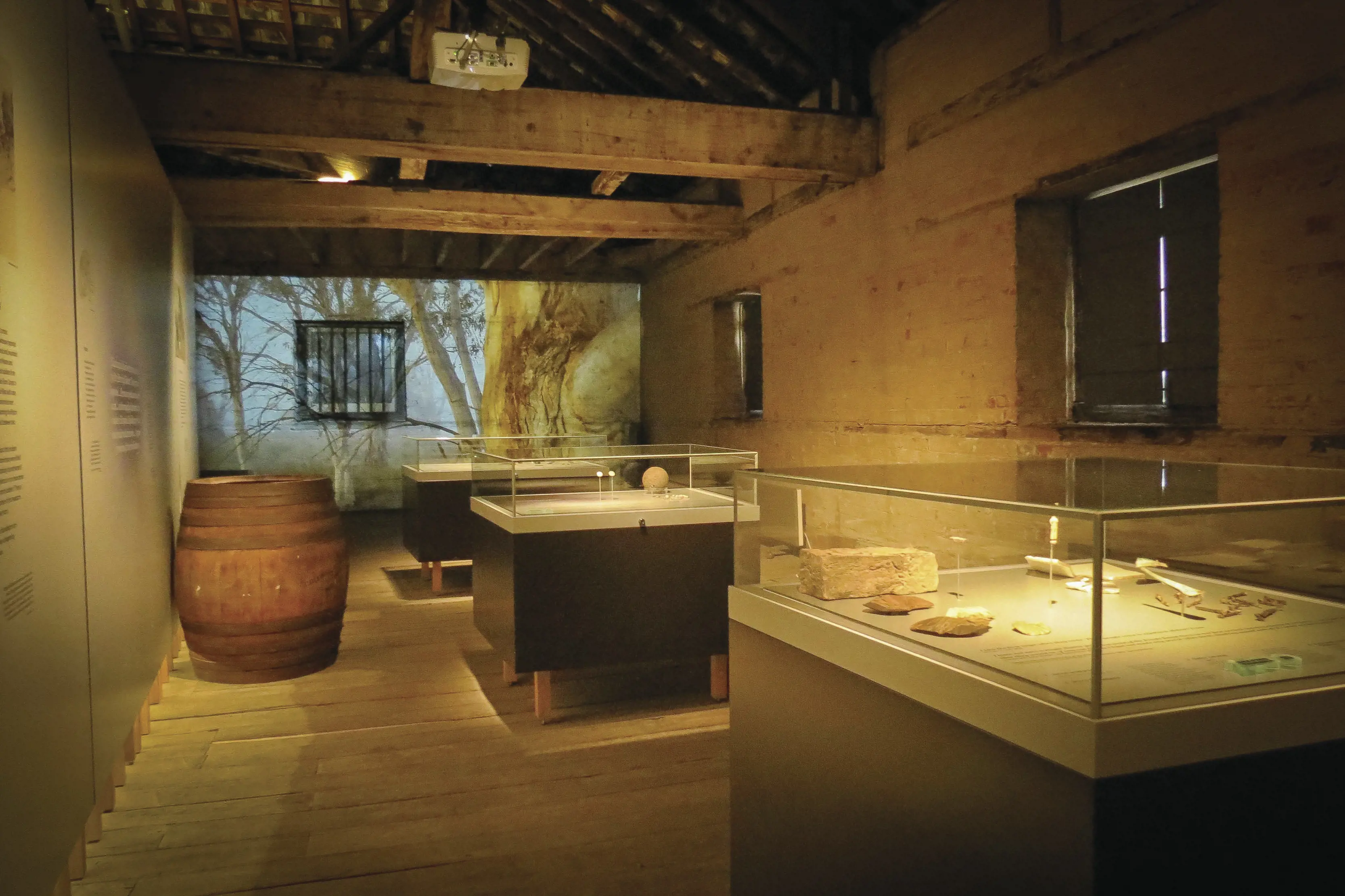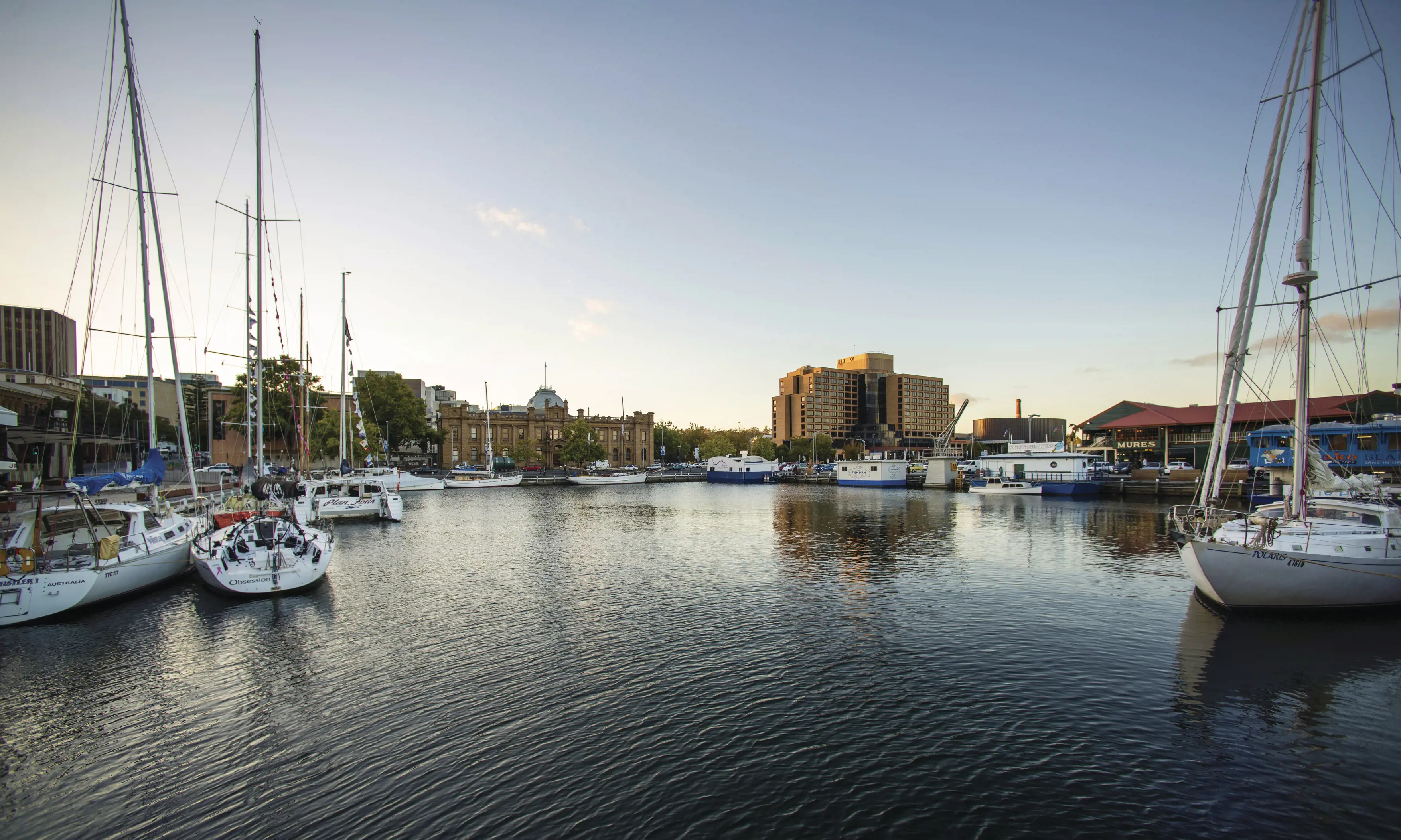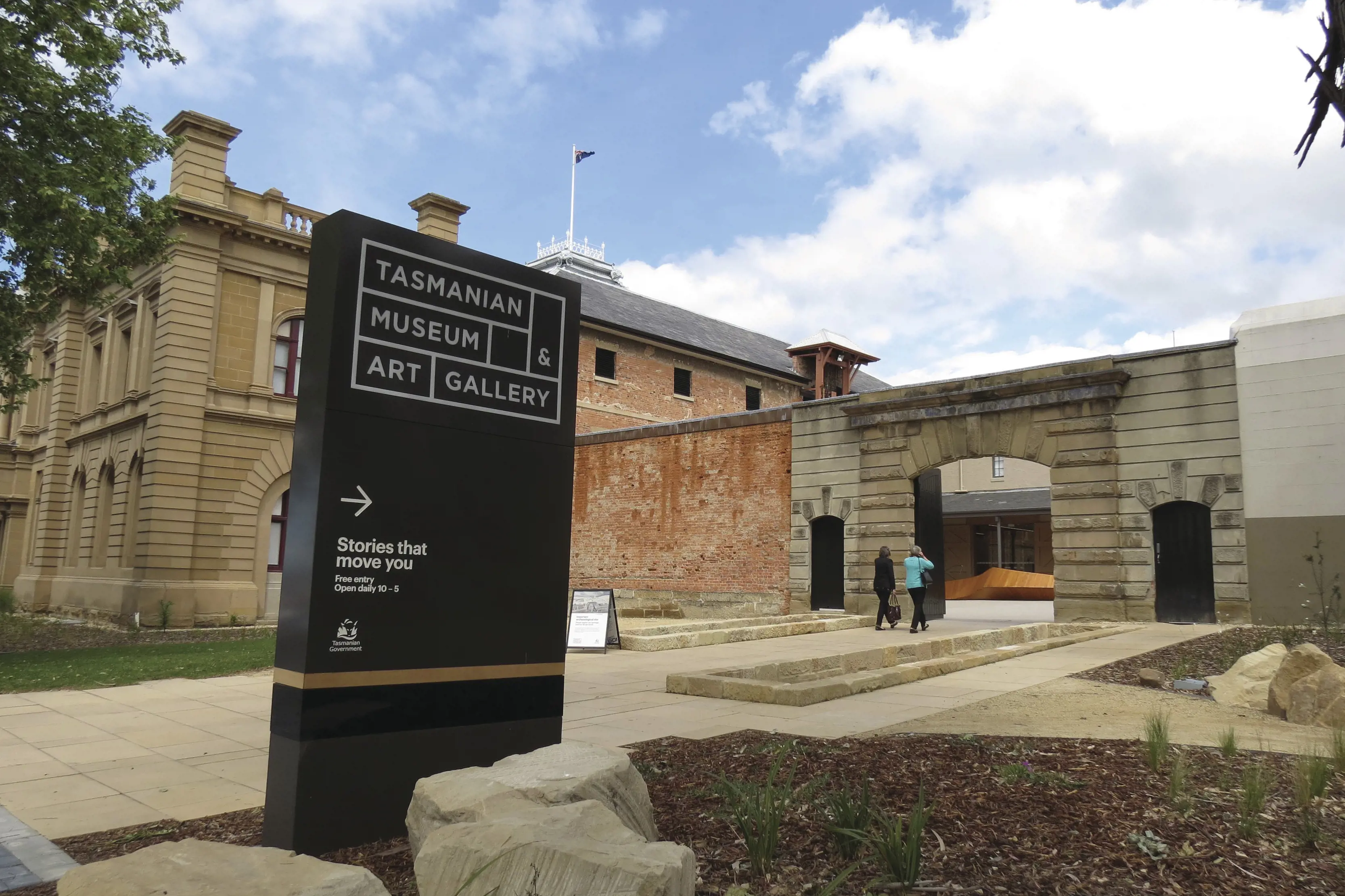The experience begins before you step foot in the door.
At the Tasmanian Museum and Art Gallery (TMAG), the buildings that house one of the most important collections in Australia are themselves some of the most significant in the country.
Prepare to spend a chunk of time here. TMAG is fascinating inside and out.
Indoors, more than a million objects ranging from a prehistoric woolly mammoth tusk to contemporary works by living Tasmanian artists are carefully curated to form part of a distinctively Tasmanian story.
TMAG’s collections were started by Australia's oldest scientific society, the Royal Society of Tasmania, established in 1843. They were housed in a single building on the corner of Argyle and Macquarie streets and gradually expanded to occupy an entire city block, including Tasmania's oldest surviving public building, the 1808-10 Commissariat Store; the Private Secretary's Cottage, built before 1815; and Tasmania's first federal building, the 1902 Custom House.

While that makes TMAG the second oldest cultural heritage organisation in Australia, it’s also one of the most progressive and special. “TMAG is rare in Australia because it combines an art gallery, herbarium and museum,” says TMAG spokesperson Melissa Edwards. “We are a unique cultural tourism attraction, embracing the diverse treasures of art, history and science, and our site includes some of the most significant heritage buildings in the country.
“Visitors can draw on collections and expertise that educate, stimulate thought and encourage imagination across the spectrum of human knowledge, past and present.”
While visitors can learn about Tasmania’s history and heritage, they can also explore the state’s links with Antarctica, admire significant colonial artworks and get to know remarkable animals, including the thylacine - the now extinct Tasmanian tiger. “Importantly, those visiting TMAG can also deepen their understanding and discover complex histories, including those of Tasmania’s First Peoples,” Edwards says.
Catch a temporary exhibition, and make some time to visit TMAG’s house museums: Markree House and Garden, in Hobart, and Narryna Heritage Museum, at Battery Point. Both offer unique and intimate insights into historical Tasmanian life.
There are always new things for all ages to see at TMAG, says Edwards, including “a wonderful gallery designed just for the under sevens, mapiya lumi / around here”, as well as a diverse on-site and online public program that includes events, workshops, talks and performances. And entry is free.

Need to know
TMAG is at Dunne Place, Hobart; open daily January-March 10am-4pm, Tue-Sun April-December.
Markree House Museum and Garden, 145 Hampden Road, Hobart; open Sat during summer, 10am-4.30pm.
Narryna Heritage Museum, 103 Hampden Road, Battery Point; open Tue-Sat, 10am-4pm.
